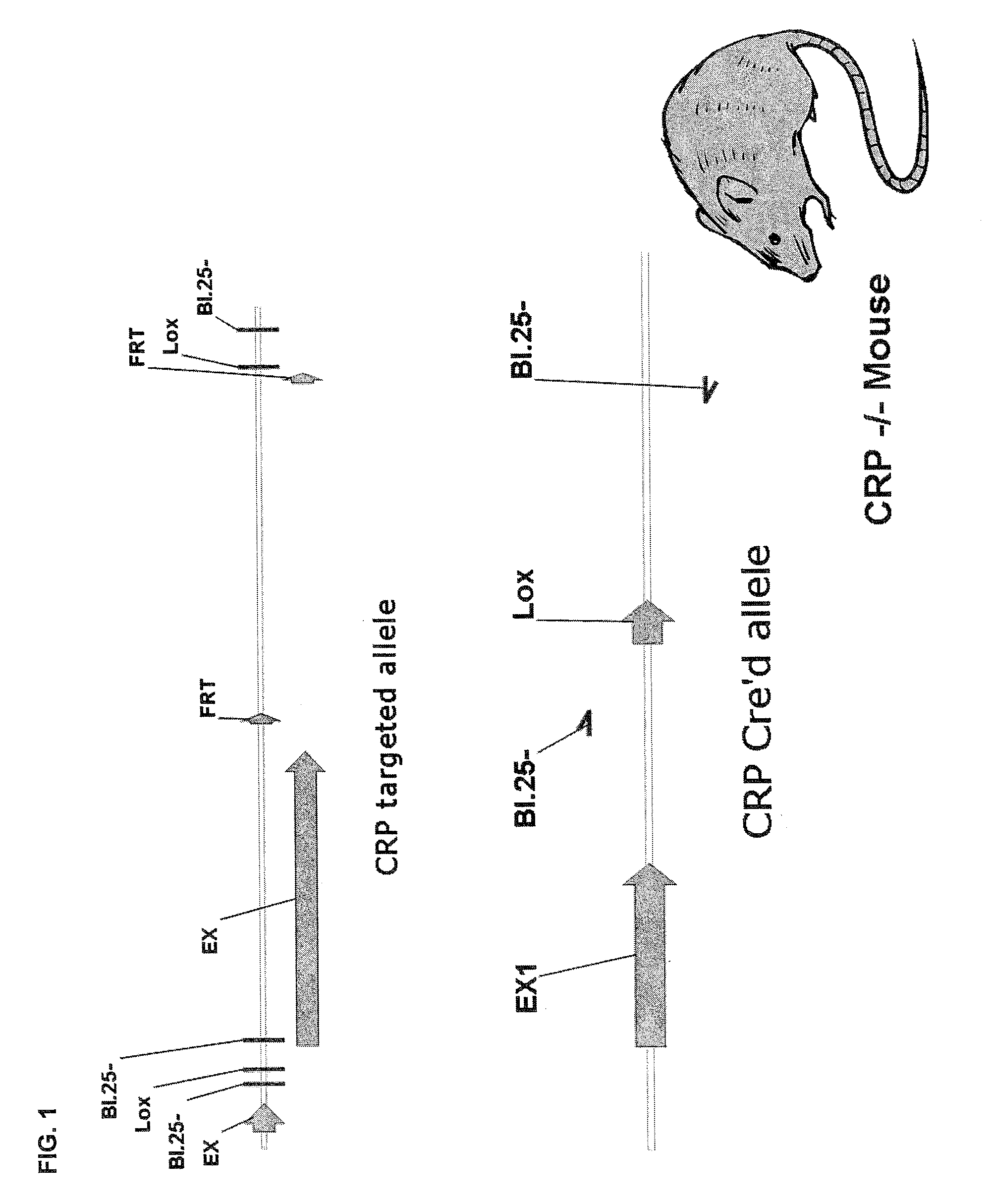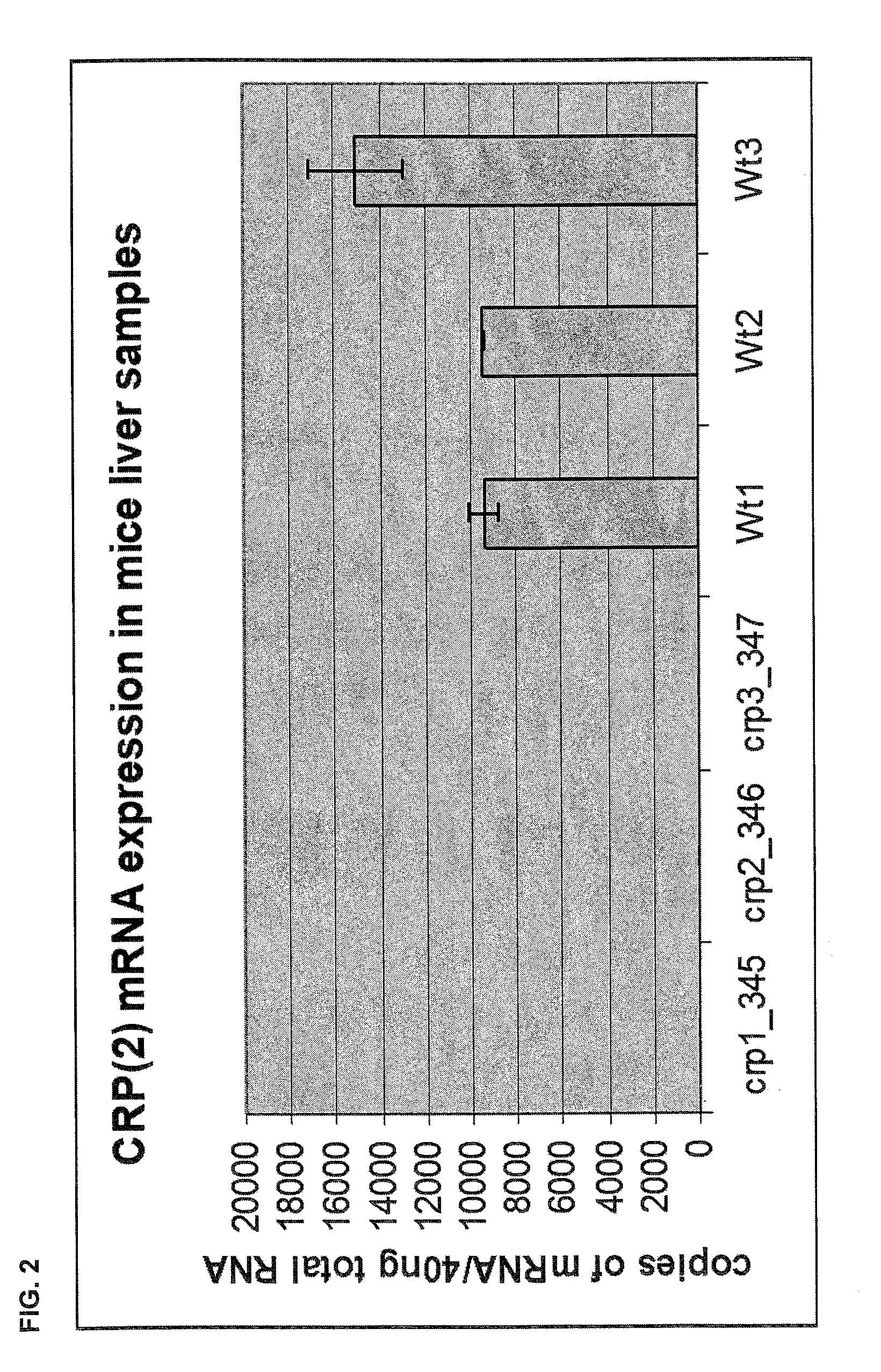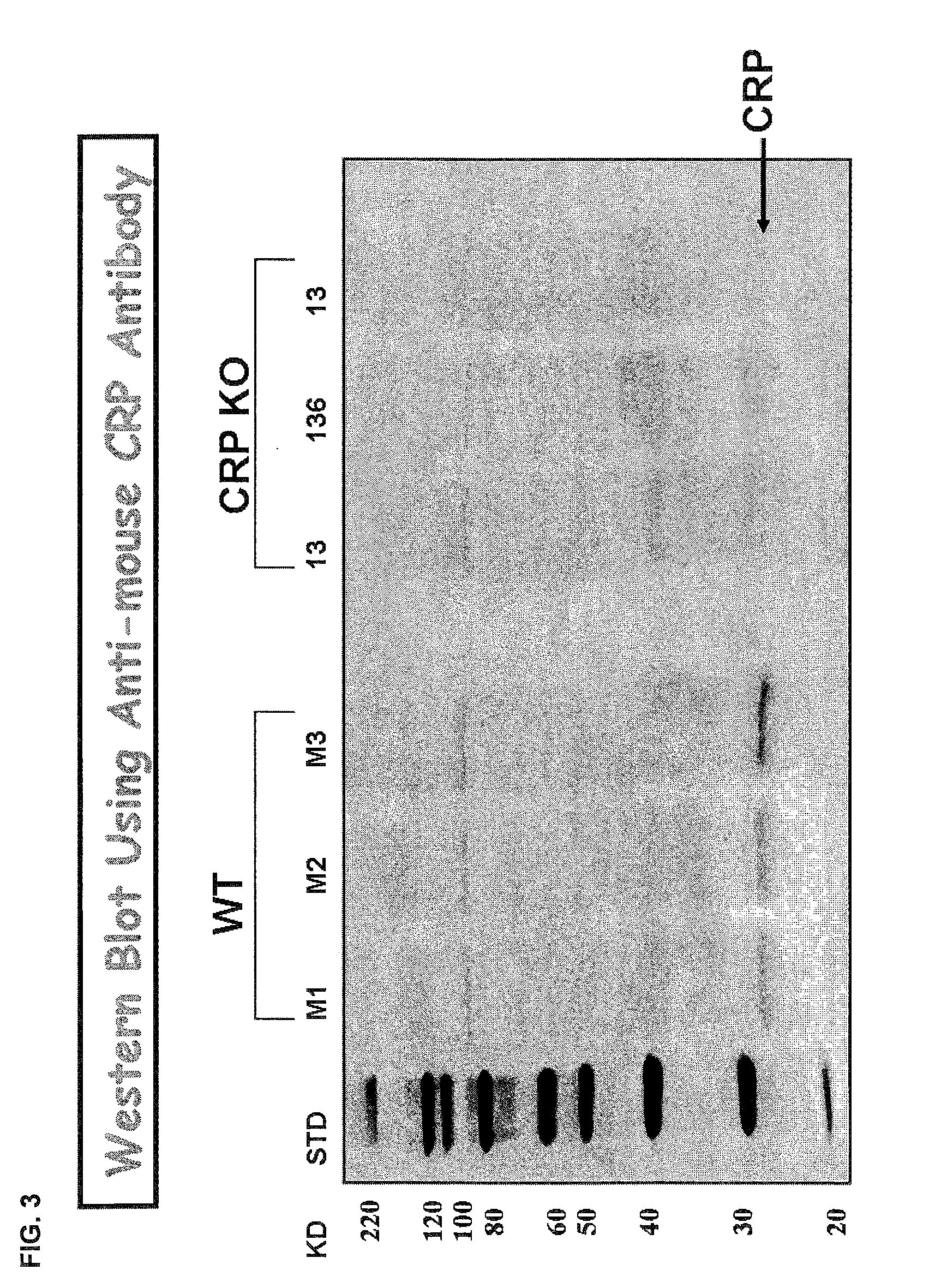C-reactive protein (CRP) knockout mouse
a technology of c-reactive protein and mouse, which is applied in the field of transgenic, non-human animals, can solve the problems of difficult to determine gene function, dna introduction by electroporation is less efficient, and the function of total or partial loss of crp gene function
- Summary
- Abstract
- Description
- Claims
- Application Information
AI Technical Summary
Problems solved by technology
Method used
Image
Examples
example 1
[0176]Animals. All animal experiments were performed in accordance with internal protocols established by Institutional Animal Care and Use Committee and under NIH guidelines.
[0177]Generation of conditionally mutant CRP mice. CRP mutant mice were generated in collaboration with Lexicon Genetics, Inc. The conditional targeting vector was derived using the Lambda KOS system. Mice heterozygous for loxP flanked exon 2 were bred with a protamine-Cre recombinase transgenic line. PCR primers were used for genotyping. Primers BI.25-3 (5′-GAA GTA TCT GAC TCC TTG GG-3′) and BI.25-33 (5′-ATG TAA CCT GGG AGA GGA C-3′) will yield a 159-base pair fragment for the wild-type allele and a 243-base pair fragment for the floxed allele, whereas primers BI.25-33 and BI.25-27 (5′-AAA GGG AGA GTA TCA GAA CC-3′) will detect a 281-base pair fragment for the cre-excised allele. Mice heterozygous for the deleted exon2 were breed to generate homozygous knockout mice. Mice were maintained on sterile normal rode...
PUM
| Property | Measurement | Unit |
|---|---|---|
| Fraction | aaaaa | aaaaa |
Abstract
Description
Claims
Application Information
 Login to View More
Login to View More - R&D
- Intellectual Property
- Life Sciences
- Materials
- Tech Scout
- Unparalleled Data Quality
- Higher Quality Content
- 60% Fewer Hallucinations
Browse by: Latest US Patents, China's latest patents, Technical Efficacy Thesaurus, Application Domain, Technology Topic, Popular Technical Reports.
© 2025 PatSnap. All rights reserved.Legal|Privacy policy|Modern Slavery Act Transparency Statement|Sitemap|About US| Contact US: help@patsnap.com



